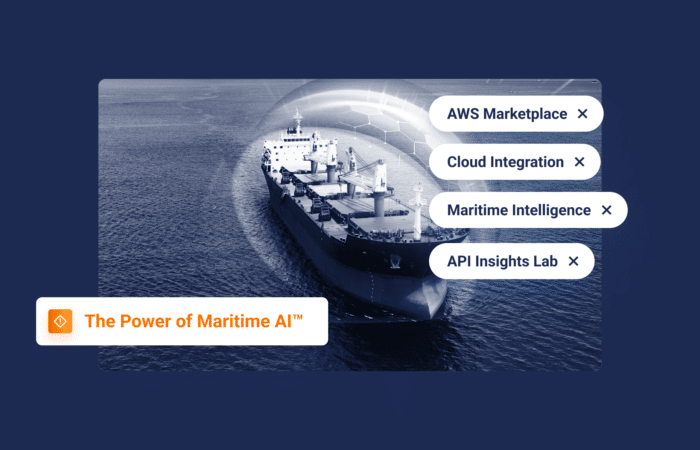What’s inside?
This post was authored by Angelia Anne Sabaretnam, CAMS, CCI. The views expressed by the writer are entirely her own and not those of her employer, or Windward.
TBML Plagues Financial Institutions & Shipping
Global Financial Integrity (GFI) suggests overall transnational crime could be worth $2.2 trillion annually – with a majority facilitated by trade-based money laundering (TBML). This is a real and current risk faced by financial institutions and the shipping industry.
Before we get into the various methods in a trade settlement, let’s define trade and the parties involved in a trade transaction in layman’s terms. Trade is the purchase and sale of goods between the buyer and the seller. It can be either domestic, or international. Among the parties involved in a trade transaction include the seller, also known as the exporter, the buyer (importer), guarantors, financiers/banks, insurers, inspectors/customs, brokers, logistical intermediaries, maritime companies, freight forwarders and government agencies.
Trade Settlement & Sanctions Risk
It is estimated that around 80% of international trade settlement occurs through open-account transactions directly between the importer and exporter. Goods can be shipped and delivered with the payment due and transacted with an MT103 SWIFT payment, with only the following details visible:
- Remitter
- Remitting bank
- Beneficiary
- Beneficiary bank
- Purpose of payment (often listed as “Goods bought or sold” or “Payment”)
This method won’t trigger an alert in an organization’s automated screening tool (AST). This common TBML scheme is used by bad actors, because it reduces the role of financial institutions and eliminates the documentary collection process, preventing the trade department from performing necessary due diligence on the parties, vessels, ports and goods involved.
Besides open account trade settlements, payments in advance (commonly known as advance payments) occur when the seller is not willing to ship the goods without an advance payment of somewhere between 50% to 100% of the shipment amount (depending on the contractual terms). Potential trade and sanctions risks may exist, as the shipment has not yet occurred, and thus there is no bill of lading (BoL) copy. This could mean an inability to identify the port of loading (POL), port of discharge (POD) and end-user of the goods of the underlying transaction.
The lack of shipping documents exposes the financing parties to jurisdiction risk, by potentially unknowingly financing a trade involving sanctioned ports or jurisdictions in sanctioned countries. The ultimate destination of the goods could be Iran, North Korea and/or Syria.
A familiar shipment route: goods shipped from “country X” to Dandong or Dalian, which are ports in the southern part of China’s Liaoning province. Often the goods are ultimately destined for North Korea, as the northeastern Chinese province borders China and North Korea. Another method is the use of a third country. For example, the close proximity of Lebanon to sanctioned Syria. Rampant smuggling of goods occurs by transporting goods from Lebanon to nearby Latakia or Tartus, the two largest port cities in Syria.
This is the climate that financial institutions are currently operating in. The large volume and complexities of international trade transactions make financial and trade systems attractive for illicit activity. Because financial institutions have little visibility over trades, detecting TBML activities and underlying sanctions risk can seem almost impossible.
AI Can Help
Windward identified 11,638 vessels that experienced a potentially suspicious automatic identification system (AIS) signal loss (January 2022 data). Its Maritime AI platform was able to differentiate between those that should be flagged as high risk and those that were unintentional/innocuous events. It concluded that 311 of these vessels had been involved in intentional “dark activities” (intentionally disabling the AIS).
Windward’s vessel behavior analysis identified 6,376 vessels that were involved in high or moderate risk activities. Such activities are detailed under OFAC’s deceptive shipping practices (DSPs) and include dark activity, suspicious ship-to-ship (STS) transfers, loitering, complex ownership structures, etc.
When a combination of high volumes of data and highly complex processes result in an inability to deal with a challenge, artificial intelligence (AI) is often a good resolution. Investigation and intelligence teams in financial institutions should incorporate AI solutions in their operations. More specifically, because TBML is often an ocean-based crime, an AI solution that is designed to understand the maritime environment could be a great fit. During the initial detection phase, Maritime AI can interpret the behaviors of vessels to flag those with a high suspicion of illicit activity. During the next stage, investigation, the bank’s team can uncover the ownership structure of vessels and connect suspicious activities at sea to a list of entities and persons of interest. Finally, the last part is the evidence phase, which allows the bank’s team to document the findings, to solidify the bank’s decision-making process.
Identifying TBML and fraud risks posed by maritime entities is critical. Maritime AI offers helpful tools.




